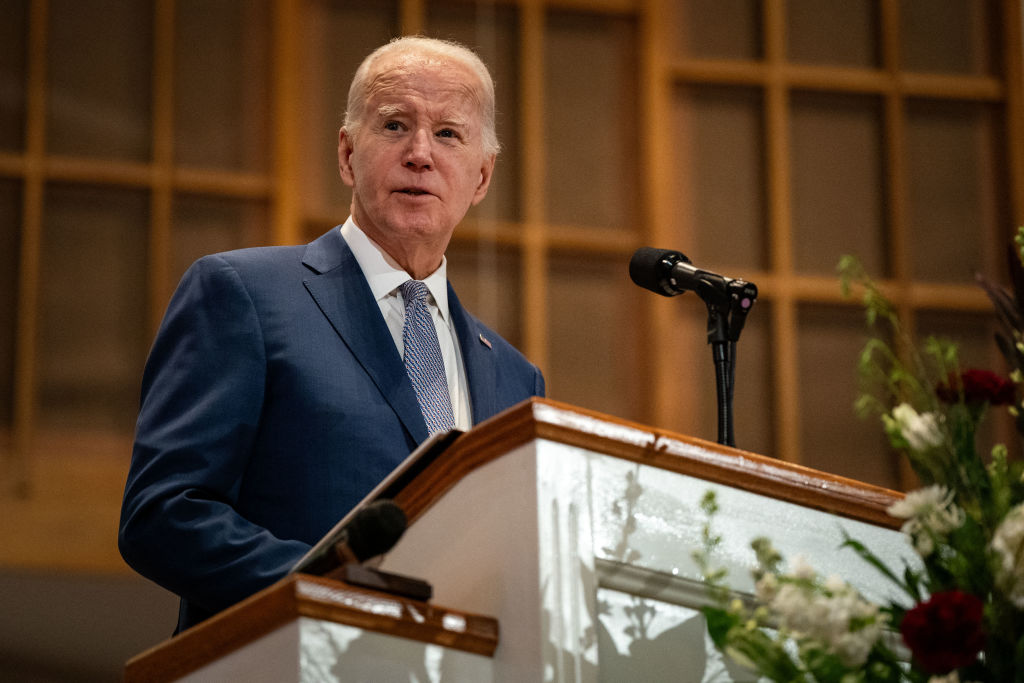The drone strike that struck near the sleeping quarters of a small US outpost in northeastern Jordan, killing three American troops in the process, has landed like a thud in the corridors of the Biden administration. Hawkish lawmakers who have been jonesing to bomb Iran into the Stone Age for years, such as Lindsey Graham and Tom Cotton, are using the weekend’s travesty to push the argument to an even higher decibel. The logic: Iran and its proxies need to understand that the US won’t be pushed around. It’s an emotionally satisfying response, but one that could get the United States into a heap of trouble if not thought through and tailored appropriately.
President Biden and his advisors have spent the last forty-eight hours talking through options. There is no question the US will retaliate in some fashion. Biden said this morning that he has already made up his mind.
But there are a multitude of ways America could take action, and to date the White House has kept its cards close to its chest. The Pentagon’s spokeswoman has merely said the US will strike back “at a time and place of our choosing,” which is a bit like saying the sky is blue and the Earth is round. Secretary of state Antony Blinken gave a bit more detail as to what the response could look like, telling reporters that it “could be multi-leveled, come in stages and be sustained over time.”
Broadly speaking, the US is likely mulling over three options.
The first is a continuation of the status quo: hit back at the militia purportedly responsible for the attack in Jordan through precision airstrikes on its arms depots, training centers, logistics facilities and leadership ranks. The Biden administration has conducted multiple rounds of precision strikes against Iran-backed militias in Iraq and Syria since mid-October, when the drone, rocket and missile strikes on American bases in both countries picked up at a feverish pace (there have been more than 150 such attacks during that timeframe). On January 4, the US killed Mushtaq Jawed Karim al-Jawari, the leader of Harakat al-Nujaba, as he was riding in his car and traveling to the militia’s headquarters in Baghdad.
These retaliatory tit-for-tat strikes, however, haven’t had the deterrent effect the administration is looking for. US troops in Iraq and Syria continue to duck fire at regular frequency, which suggests the American counterstrikes aren’t doing anything but instigating further militia attacks. The precision strikes aren’t having much of an impact on the militias’ capability either. And with every US strike in Iraq, the Iraqi government becomes that much more irritated with Washington, which in turn undermines the Biden administration’s other goals in the country. The one positive is that this option is a relatively proportionate response and low on the escalation ladder compared to other alternatives.
One of those alternatives is broadening the target set. Instead of precision strikes against a few select facilities, Biden could retaliate against a wider swath of sites associated with not only the militia that killed American soldiers over the weekend but also against others under the so-called Islamic Resistance in Iraq umbrella. This would obviously entail a greater degree of firepower than past operations over the last several months. In essence, this option is similar to the first but takes us a few steps up the escalation ladder. Such an operation may include strikes against Islamic Revolutionary Guard Corps bases in Iraq and Syria as well, something the US has already done inside Syria specifically.
Logically, an operation of greater magnitude and duration would result in more materiel damage to the militias. But they won’t end the attacks entirely. The militias have proven to be, if not un-deterrable, then at least highly motivated to get American forces out of Iraq and Syria. US-Iraqi relations could take a nosedive (that might not matter in terms of American grand strategy, but could complicate Washington’s ability to continue working with Iraqi intelligence agencies on issues of mutual interest). Iran might very well respond by sending more weaponry to their Iraqi militia partners.
The most extreme options on the table are an attack against Iranian vessels at sea or targeting Iran itself. Both scenarios would be a de facto declaration of war, even if Congress didn’t formally authorize it. The Iranians would certainly treat it as a warlike action and might jump to the conclusion that America was beginning a campaign to overthrow the forty-four-year-old Islamic Republic. Besides killing a whole bunch of Iranians and feeling emotionally pleased about hitting one of our chief adversaries hard in the teeth, the benefits of such a momentous operation are limited.
The costs, too, would be high, and they could reverberate throughout the entire region. There is an assumption out there that Iran, scared of what the mighty United States could do to it, would simply stand back and cower in the corner after getting attacked. Supreme Leader Ayatollah Ali Khamenei, the logic goes, would be so petrified that he would plead with proxies in Iraq, Lebanon, Yemen and Syria to stop firing on US troops and assets.
That, of course, would be a childish and totally inaccurate assessment of how Iran has operated over the last four decades — or, more specifically, over the last five years. While Tehran couldn’t compete with the United States in terms of conventional military power, it isn’t afraid of retaliating to slights, real and perceived. When the US withdrew from the Iran nuclear deal and re-imposed sanctions, Iran responded by targeting oil tankers in the Persian Gulf. When the US assassinated Iranian general Qasem Soleimani, the Iranians waited a few days before hitting a US base in Iraq with ballistic missiles. And when Israel began hitting Iranian vessels at sea, Iran used drones to strike back at Israeli-owned ships. It’s inconceivable to believe Iran wouldn’t react harshly to an attack on its territory, and due to the extensive American base infrastructure in the Middle East, the Iranians have a lot of targets to choose from.
The US doesn’t have a Goldilocks Option here.


























Leave a Reply